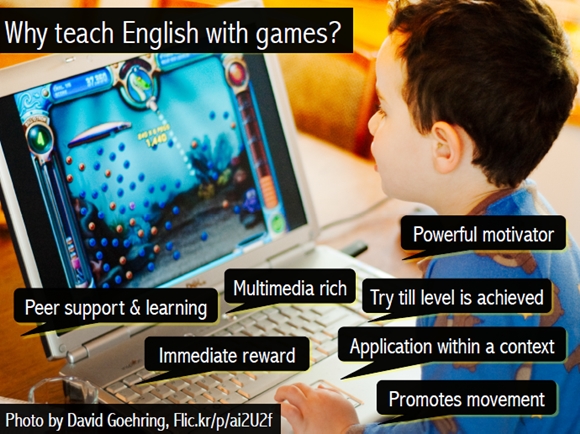In today’s fast-paced, digital world, the role of technology in education has become indispensable. For TESOL (Teaching English to Speakers of Other Languages) instructors, integrating technology into the classroom is no longer just an option—it’s a must. One of the most exciting and effective ways to leverage technology is through gamification, where digital games or game-like elements are incorporated into learning activities to engage and motivate students.
In this article, we’ll explore the impact of gamification on language learning, how TESOL teachers can effectively use games to teach English, and the tools and platforms available to create an engaging, tech-driven learning environment.
Why Gamification Works in Language Learning
Language learning can be a daunting task for many students, especially those who are beginners or are learning English in a formal academic setting. This is where gamification can offer an edge:
- Increased Engagement: Games provide interactive experiences that encourage participation. The use of rewards, points, and competition keeps students engaged and motivated.
- Emotional Involvement: Games create emotional investment. Students feel a sense of achievement as they progress, which boosts confidence and promotes a positive learning environment.
- Active Learning: Gamification shifts the focus from passive reception to active learning. Whether it’s vocabulary, grammar, or speaking practice, games demand interaction and immediate response, allowing learners to use language in real-world contexts.
- Immediate Feedback: In many game-based applications, learners get instant feedback. This helps students recognize mistakes, learn from them, and immediately apply corrections, which enhances retention.
Gamification Tools and Platforms for TESOL
To successfully integrate gamification into an English learning curriculum, TESOL teachers can utilize a range of digital tools and apps designed to make learning fun and effective. Below are some popular platforms and how they can be used in the classroom.
- Kahoot! Kahoot! is a game-based learning platform where teachers can create quizzes on various topics and set them up as live competitions. In the TESOL context, you can use Kahoot! to review vocabulary, grammar rules, or comprehension exercises. Students can play in teams or individually, and the competitive nature of the game makes for an exciting classroom experience.
- How to Use: Create a vocabulary quiz on adjectives, prepositions, or phrasal verbs. At the end of a lesson, use Kahoot! to quiz students in real time to test their retention of the material.
- Quizlet Quizlet is a versatile platform where teachers can create flashcards, games, and quizzes. It’s an excellent tool for language learners who need to reinforce vocabulary or practice key phrases.
- How to Use: Set up flashcard decks for specific themes such as ‘Travel Vocabulary’ or ‘Business English.’ Quizlet’s “Match” game is a fun way for students to review words and definitions by matching pairs, adding a competitive edge to learning.
- Duolingo for Schools Duolingo offers a curriculum designed for teachers. This app-based language learning tool uses a gamified approach to introduce vocabulary and grammar through fun, short lessons.
- How to Use: Assign lessons to students as homework, track their progress through the teacher dashboard, and use Duolingo’s game-like structure to introduce new topics in a fun, stress-free manner.
- Minecraft: Education Edition Minecraft might seem like an unusual choice, but its Education Edition offers great opportunities for language learners to engage in collaborative projects and communication. Teachers can set specific learning goals, such as building a model of a famous city, and students can practice speaking and writing in English while collaborating in the game world.
- How to Use: Assign a project where students must communicate only in English while building or completing a task. This creates opportunities for real-time language use and problem-solving.
- Classcraft Classcraft is a game-based learning management system that turns the classroom into an adventure. TESOL teachers can reward students with points for completing language tasks, participating in discussions, or improving their language skills.
- How to Use: Create language-based quests or challenges where students must complete tasks such as solving grammar puzzles, practicing dialogues, or writing essays. The reward system can be tailored to language learning objectives.
Designing Effective Game-Based Learning Experiences
To maximize the effectiveness of gamification in the classroom, TESOL instructors should consider the following when designing lessons:
- Set Clear Learning Goals: Ensure that each game or activity aligns with specific language objectives. Whether it’s improving speaking fluency or learning new vocabulary, the game should reinforce the lesson content.
- Balance Fun with Learning: While games should be engaging and fun, the educational value should never be compromised. Balance entertainment with meaningful language practice to ensure students are truly learning.
- Provide Opportunities for Collaboration: Encourage students to work together on game-based tasks. Collaborative games promote peer learning and communication, which are vital in language acquisition.
- Track Progress: Use platforms that allow you to track student progress and provide feedback. Many apps offer teacher dashboards to monitor student engagement and performance, ensuring that no student is left behind.
Conclusion
Gamification brings excitement and innovation into the TESOL classroom, helping to create a dynamic and immersive learning environment. By incorporating games and technology into English lessons, teachers can boost student engagement, foster collaboration, and make language learning a truly enjoyable experience.
Incorporating these tools into your teaching practice can elevate your approach, making both teaching and learning more interactive, fun, and effective. Get your game on, embrace technology, and watch your students thrive as they learn English through play!



